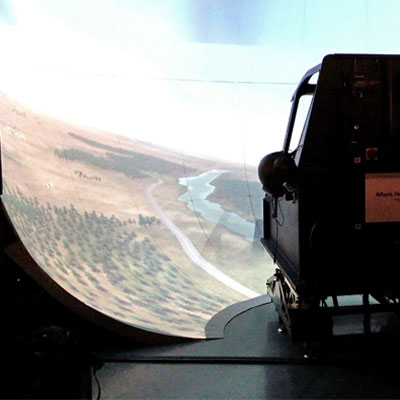While computer-based games are essential to supporting training, we are discovering manual wargames have many benefits – they are flexible, dynamic, and promote better thinking and decision-making.
Key Facts
-
The University is currently researching both manual and computer-based games and incorporating them into our postgraduate training courses and consultancy projects.
-
The Centre for Simulation and Analytics developed a manual game for a competition run by Dstl (Defence Science and Technology Laboratory), calling for innovative ideas in defence.
-
The development team made a deliberate decision to opt for a flexible, map-based system that is easy to produce, relatively inexpensive, and quick to configure and play through different options.
Impact of our research
Because of the development of a range of manual wargames at Cranfield, the technique is being widely adopted in the UK, including by our partners Dstl and the Ministry of Defence, as well as overseas, such as in Canada.
Players are forced to operate in a dynamic, adversarial, decision-making and story-living environment that forces them to engage with the process and respond to change. They allow for participants to analyse the situations they are facing and explore new ideas. They also receive immediate feedback and are challenged about their choices and decisions.
The new game consists of large-scale map sheets with simple counters that represent each force. The counters are labelled with standard military symbols and numbered with a point system to indicate each unit’s combat effectiveness. The game allows users to look at historical events and to play out alternative options without the need to recode as you would with a computer-based game.
Why the research was commissioned
At the end of 2014, then US Secretary of Defense Chuck Hagel’s Defense Innovation Initiative called for a ‘reinvigorated wargaming effort’ to ‘help us think more clearly about the future security environment’.
Although there are computer models for supporting military campaigns, they often lack flexibility and need to be recoded to accommodate changes. The military has a long track record of using maps and intuitively turns to them in its campaigns.
Why Cranfield?
In our Simulation and Analytics Centre, a team of mathematicians, statisticians, and modelling and simulation specialists develop games specifically to be used by the defence industry. The University is currently researching both manual and computer-based games and incorporating them into our postgraduate training courses and consultancy projects.
Facilities used
The Simulation and Synthetic Environment Laboratory provides a focus for both education and research in the emerging applications of defence modelling, simulation and synthetic environments.
